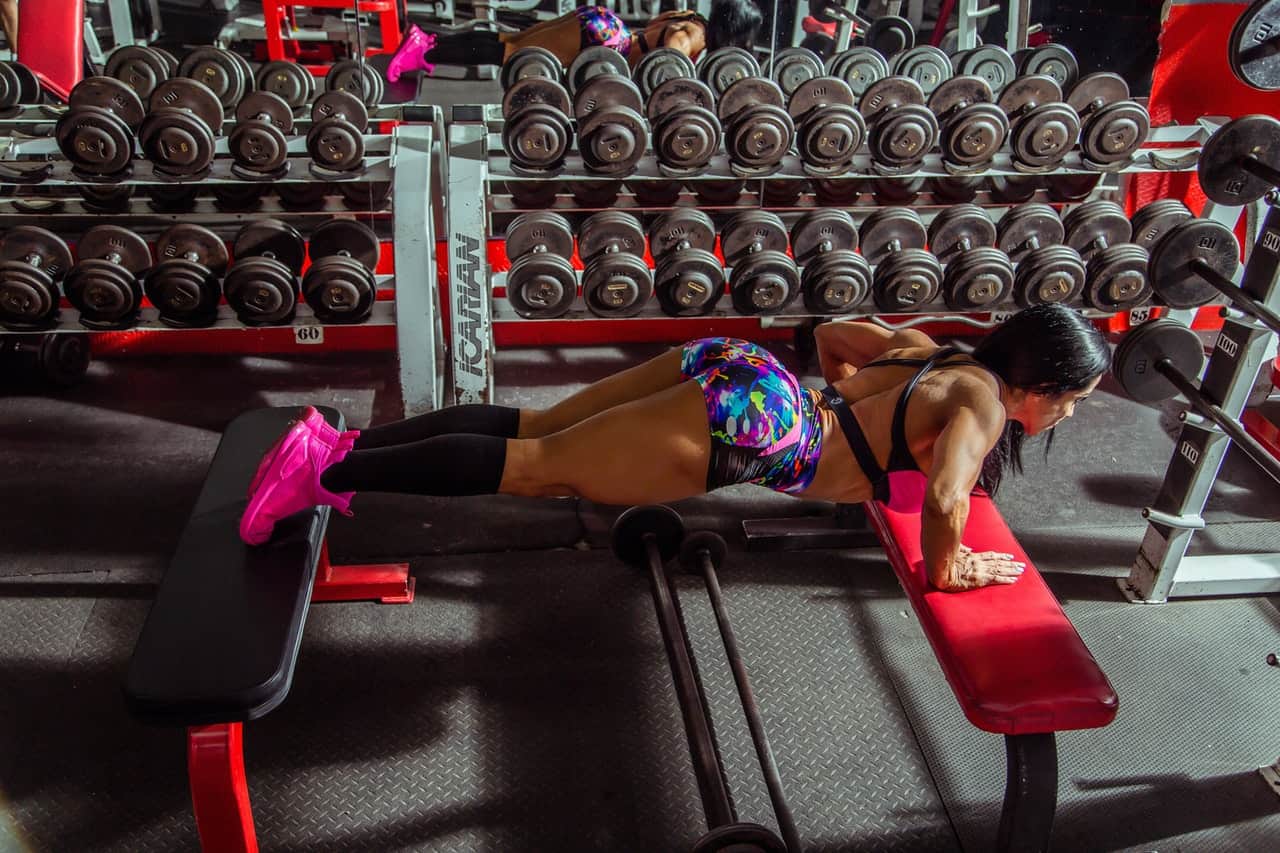When choosing a workout type to keep fit, you’ll have to choose the best direction to suit your purposes. While exercising is beneficial in general, not all kinds of it are equal. You should always base your workout regime on personal needs.
Among the whole variety of training regimes, calisthenics and weight lifting are the two most popular branches of strength training. While the first works with body weight and improves coordination, flexibility, and endurance in addition to building strength, the latter builds muscle mass and definition alongside strength. For beginners, it’s hard to choose between the two. However, if your goal is a healthy, well-rounded, and toned physique, mix and match is your top option. They work perfectly in tandem.
In the following article, I’ll touch upon various benefits of both training styles and compare them side by side, so you can make an informed choice and stick to a routine that follows and satisfies your needs.
Calisthenics and weight lifting are two opposite yet so similar fitness styles. While calisthenics work with your own body weight, the latter uses additional weights such as dumbbells and barbells. Yet, they are both forms of strength training. Resistance is resistance, no matter whether it comes from additional weights or our body weight.
You can benefit from both, but the journey to the perfect body will be different!
Benefits of Calisthenics

Calisthenics is the form of resistance training that utilizes body weight. It encompasses an extensive range of exercises targeting every possible muscle group. In addition to building general strength, calisthenics gradually improves coordination, balance, stamina, and flexibility. Combined, all these components constitute the overall notion of a healthy body.
In addition, calisthenics is a less injury-prone type of workout. Working with your body weight ensures that you limit your training intensity to the weights you’re used to. Though, don’t think that calisthenics is only useful for beginners, most exercises have advanced options for experienced athletes.
What Is Considered an Active Lifestyle?
Another important benefit of calisthenics, especially during these pandemic times, is its affordability and convenience. To start for calisthenics training, all you need is your body and motivation. Of course, a good mat to protect your knees, elbows, etc., would be appreciated. For some upper-body exercises, you’ll need a bar; but that is nothing compared to the wide range of equipment and weights required for weight training. And, when gyms are closed, and you don’t have a spacey garage for the weights, calisthenics is the way to go.
To learn all the benefits of this training and what exercises to begin with, read my article on What is Calisthenics.
Benefits of Weight Lifting

As you use additional weighted objects for resistance, your muscles are challenged more effectively. In addition, it is easier to progress your exercises simply by taking heavier weights.
Weight lifting is perfect for muscle group isolation. While calisthenics usually engages large and multiple muscle groups, weight lifting can be used both for compound training and for working a specific narrow muscle group to its limits. Adding weights is your best option if you want not simply toned but a buffy body.
Overall, weightlifting also positively affects flexibility, coordination, and weighted endurance, just like calisthenics do. Certain exercises that include explosive movements train your balance, and the compound full-range exercises gradually improve the flexibly aspects. Depending on the intensity and duration of a certain exercise, weightlifting also trains muscle endurance. Besides, it takes a particularly strong mind to work those reps to failure (or just shy of it).
When done with the proper technique, stronger muscles provided by weight lifting (quicker than calisthenics do) also improves your posture and everyday alignment.
Which Training Is Better for Strength?

Considering that both of the discussed types are a part of strength training, you’ll gain strength either way. Now, what differs is what exactly you are measuring.
For maximum strength, weight lifting is better. As you train with added weights and increase their mass, the maximum you can push or pull increases.
Keto Bodybuilding: How to Build Muscle Without Carbs?
For relative strength, calisthenic exercises that work with your body weight and increase strength without much muscle mass are better.
In short, weightlifting should be a slightly more beneficial form of training for strength as people usually strive for maximum strength results. If your goal is to win a weightlifting competition, you know your answer. Overall, for regular daily life, both will make you strong and healthy.
Which Training Is Better for Fat Burning?

Fat burning is a bit more complex than strength. It includes several factors that have to be taken into account.
First of all, the most important factor of fat loss is the calorie deficit. When your body expends more calories a day than it gets with food, it uses your inner storage. To not lose all our muscles in the process, regular training is needed. Plus, a balanced healthy diet would be of great help.
High-intensity training and cardio are the most effective forms of workout in terms of burning maximum calories per minute. In this aspect, calisthenics often used for HIIT training and adapted to higher intensity are a winner in terms of fat burning.
Zac Efron Workout Routine – How to Build a Baywatch Body
However, there is also an aspect where weight lifting is also beneficial. Bigger and stronger muscles generally increase the BMR (basic metabolic rate). Meaning that your body uses more energy in the resting periods (aka burns more calories.)
Thus, for fat burning, calisthenics comes up with a slight advantage. Though, weights can serve as an effective bonus as well.
Can I Do Calisthenics and Weight Lifting Together?

The right question would be, why are you not combining calisthenics and weight lifting in your training yet? The two work best in tandem. Where one lacks, the other fills in.
If you include both in your training routine, you balance out their weak points and create diversity that, ultimately, will lead you to your desired physique.
For example, one of the weakest points of weight lifting is muscle imbalance. As this type of training isolates muscle groups, it can create muscle imbalances where certain groups are left out. This, in turn, leads to a decrease in flexibility, balance, and endurance. And this is where complex calisthenic exercises come in handy. The combination balances out your performance – gives you strength and range of motions.
After all, for improved quality of life, balance is the key.
But how to combine them? You may either mix them in one training, e.g., in supersets, you separate calisthenics workout and weight lifting to different days.
Conclusion
Overall, calisthenics and weight lifting are two forms of strength training that work perfectly in tandem. They create the perfect training routine to reach your goals and more. There is no need to choose between the two – just that the best from each and build yourself a strong and healthy body.
Even the bodybuilders of the past, like Arnold Schwarzenegger, recognized the benefits of such a mix. Thus, you could spot handstand pushups just as easily as barbell presses.
To further prove the superior results of combining weight lifting and bodyweight exercises, read this 2008 study on “The effects of combined ballistic and heavy resistance training on maximal lower- and upper-body strength in recreationally trained men.” The results show that the weights-only group had an overall lower strength increase.
All in all, I hope that you neglect none of the two forms of training and find a suitable way to combine them in your fitness routine.
 Fact checked by
Fact checked by